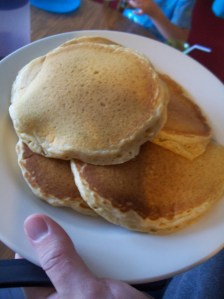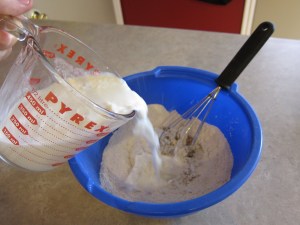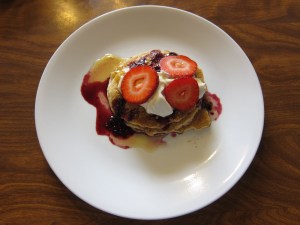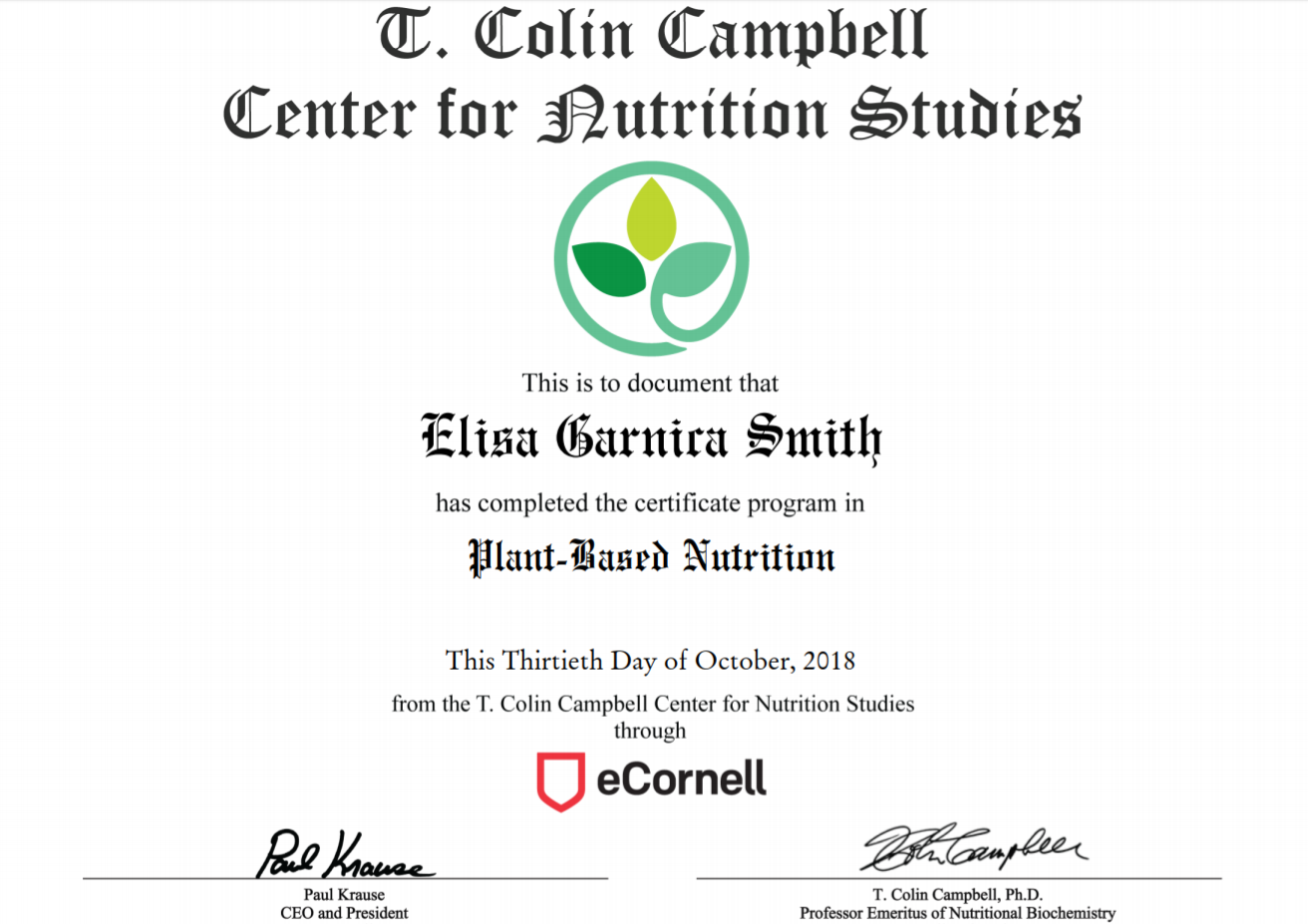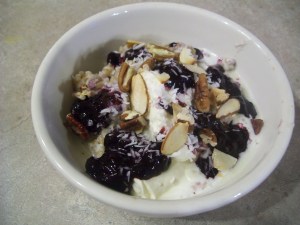
I found a recipe on pinterest the other day that I had to try. I made a couple of very minor adjustments to the recipe(like I always do…can’t seem to leave recipes ‘as is’) and then I was in the kitchen baking. The prep time was probably only about 10 minutes(though it cooks for nearly an hour) and it’d be half that if you already had almond milk made up, which I didn’t so I made some from scratch. I LOVED this recipe! Scott, Jane and Charlie had some too and they all really liked it. It’s a definite keeper. I made it in an 8×8 dish and we were able to have leftovers for a day which were also SO yummy! The blueberry sauce and whipped cream were necessary toppers for me(or I suppose you could just add a little of your favorite milk instead of the whipped cream) and I also really liked having a few chopped, raw pecans. I made my own whipped cream with some agave in my Blendtec which just took a few seconds. So healthy, so filling and satisfying. The next time I made it, I put all the dry ingredients together in a bowl the night before with a note out for my husband(who wakes up early to read and exercise…I do those things in the day if you were wondering 🙂 ; I plan on waking up earlier once this baby is born) with instructions to preheat the oven and then add this much milk and blueberries, stick it in a pan and cook it this long. It only took him a minute to do that and when me and the kids woke up awhile later, it was all ready to eat. Give it a try.
This goes in really runny and comes out looking more like a baked cake. Moist but not so runny.
Blueberry Coconut Baked Steel Cut Oatmeal (serves 6)-adapted from familyfreshcooking.com
Oatmeal Ingredients
3/4 cups Steel Cut Oats
2 cups unsweetened Vanilla Almond Milk (I make this using 1/2 cup almonds soaked overnight and blending in hi-power blender them with 2 c water and 1 tsp vanilla extract then straining through a nut-milk bag or in my case a paint strainer bag I purchased really cheap from Home Depot)
1 cups light unsweetened Coconut Milk
3/4 cups fresh or frozen Blueberries (if frozen, do not thaw first)
1/8 cup unsweetened Coconut Flake
Stevia or your favorite natural sweetener to taste
Directions for Oatmeal
Pre heat oven to 350 degrees with the rack in the center. Lightly coat an 8×8 inch baking dish with cooking spray(this recipe can easily be doubled and cooked in a 9×13). Combine all ingredients in a large bowl adding blueberries and coconut last. Sweeten to taste (I used 1/2 tsp stevia) Bake for about 55 minutes(add a few minutes if doing in a 9×13), until the oatmeal is set and not runny in the middle.
Optional Toppings
Chopped Pecans or other Toasted Nuts
Whipped Cream (I love this topping on here. I make my own whipped cream using agave instead of sugar to sweeten it)
Blueberry Sauce
1 cups fresh or frozen Blueberries
1 Tbsp agave
Heat the blueberries with a splash of water over medium high heat. When you hear them sizzle reduce heat to medium and cook for about 5 minutes until saucy. Mash the blueberries against the side of the pan with a spatula or spoon.
Serve oatmeal with some almond or coconut milk, whipped cream, blueberry sauce and any other optional toppings. Great as leftovers too!




